The process of architecture involves several activities rather than just drawing up plans and designing structures.
Before starting any architectural project, the first step is to complete the architecture site analysis. Architecture site analysis is the preliminary process that involves the research, analysis, and evaluation of various aspects related to the project’s site.
Such analysis is dedicated to studying and understanding different contexts of the project site, such as historical, legal, geographical, climatic, etc. The purpose of the analysis is to determine whether the project is practically feasible or not.
The findings of an architectural site analysis generally take the form of diagrams or sketches. Correct research of various factors affecting the site will help solve several construction problems, such as the structure’s design and layout, placement, and more. Thus, it can be said that architectural site analysis is the crucial starting point of any construction process.
Architecture Site Analysis
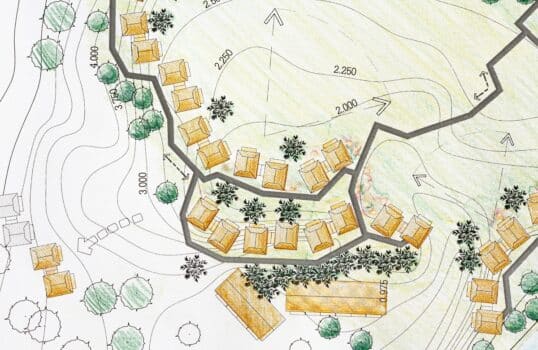
As explained above, undertaking a site analysis is the first and most crucial step before starting the process of construction. There are several reasons why this phase is one of the most critical and must be carried out correctly.
-
- Undertaking a site analysis will help assess whether the project is financially feasible
- It will help develop parameters that will lead to the best design
- Every project is unique, and site analysis helps identify unique opportunities
- A proper site analysis process helps consider present and future developments
- It helps identify factors and elements that might affect the building placement
- Considering future conditions will help develop an adaptive design
- A site analysis will help the architect blend the new structure with the site’s existing conditions
- Unwanted conditions can be easily identified through the process of site analysis
Advantages Of Undertaking An Architectural Site Analysis
Undertaking a site analysis is not only necessary but also offers several benefits for the project.
-
- Clients require information about the construction project as it progresses, which the site analysis provides
- It helps maximize return on investment (ROI) for clients who can check the project’s feasibility before investing
- Site analyses also help resolve any issues at the initial stage, preventing more significant problems later
- With the correct information, the team involved in the project can make informed decisions
- The site analysis helps in saving time spent in conceptualization and visualization
- The process also helps avoid legal problems through feedback from local authorities
The Process Of Architectural Site Analysis
The most effective site analysis will provide the maximum amount of information you require before the next stage. The site analysis process involves several aspects that need adequate consideration.
Research is one of the most crucial points of any architectural site analysis you will undertake. There is an inexhaustible list of factors that a proper research process should cover. It should study the site’s present physical condition and relevant historical data. This step helps in defining the problem that is to be solved.
You should also pay attention to changes and transformations taking place on the specific site. Similarly, understanding the surrounding context is also a part of the data collection process. The community and neighboring areas can play a vital role in providing relevant information as well.
Before visiting the project site, make sure to provide a decent amount of time to conduct a desktop study. Such a study can provide a lot of important information relating to the site. It will also help you be well prepared when you visit the site and highlight specific things that require attention.
Another aspect that can prove very useful is obtaining an OS map of the area in which the project site is located. In addition to other information that the client provides, this map will help establish the location of the site’s boundaries.
1. Tools Of The Trade
Several tools and technologies will help you complete a site analysis in the most efficient manner. Some of these tools are mentioned below:
-
- Google Street View – This is one of the most powerful tools for site analysis and allows viewing recent changes in an area
- In combination with other tools like aerial photographs, Google Street View can be an excellent resource for site analysis
- CadMapper/CadEarth – Such tools offer 3D maps that help determine the site’s volumetric scale
- Property records such as maps offer information on factors like land ownership, transportation facilities, etc.
- You can also gather additional information from local newspapers, historical societies, community centers, etc.
- A notebook, camera, tape measure are essential tools that can be substituted with a smartphone
- Smartphone Applications – Some great apps help you collect information from the site
- These applications include Google Keep, Evernote, and 3D Scanning with Display
- Traditional site analysis tools include the Sun Path Diagram, the Sundial, the Wind Square, etc.
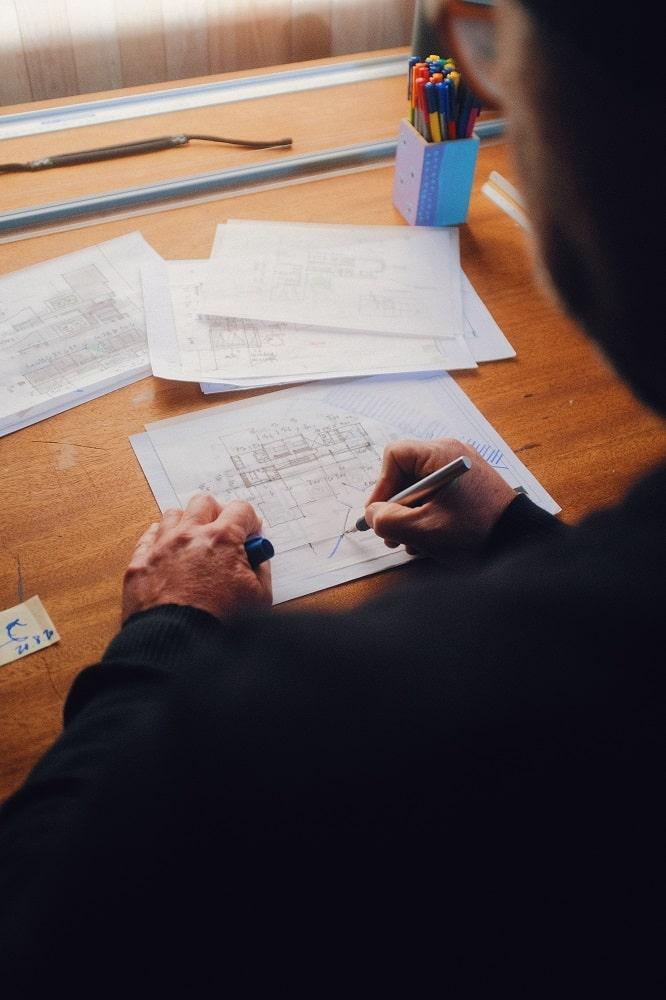
2. Data Collection On The Site
First impressions are crucial during the process of data collection. Any feature or characteristic that catches your attention while visiting the site should be taken note of. The local inhabitants of the area can provide valuable information regarding the site and its historical context. Observation also helps determine various factors and their relationship with one another.
Additionally, it is essential to record measurements of all necessary features, especially those not present in the site plan. Such measures play an indispensable role during the process of creating diagrams and during the design phase.
Visual documentation such as photographs and sketches are also beneficial for the process of analysis. Aerial photos of the site and different types of maps can also be used for context during later stages.
3. Analyzing And Synthesizing The Data
The data collection process is followed by the examination process, which helps make sense of the acquired data. It involves putting all the pieces of information together to establish various existing relationships. This process can be a visual one and generally leads to the process of synthesis.
The collected data is only necessary if it can be structured and examined to extract meaningful information. The synthesis of the gathered and analyzed data will guide the project through various stages of development. Examination of the data will also reveal that certain factors will significantly influence multiple aspects of the design and construction process.
The synthesis process involves developing a schematic design and an initial estimate of the cost of the project. This process is generally followed by more detailed plans and a revised cost estimate, all of which depend upon the analysis findings.
4. Creating Diagrams Of Findings
Diagrams provide the best method of data presentation that is easy to comprehend for all stakeholders. There are several different methods of creating charts, such as including all relevant details in a single diagram or creating several diagrams outlining additional features.
Which method to select varies from one case to another and requires consideration of time constraints, available resources, etc. There is, however, one important thing to note when going with the first option.
While putting all pieces of information in a single diagram, you should ensure that it does not become overloaded or cluttered, making it challenging to comprehend. This results in a larger diagram that contains many details in contrast to several smaller diagrams highlighting different features.

5. Maintaining The Right Balance
The hierarchy of the drawings should also be clear. It is best to use pens of varying thickness to demonstrate different elements.
The diagram or diagrams can include almost any element that is relevant to the project design purpose. These elements can consist of information from the site visit, isometrics, perspectives, elevations, etc. Ensure that the diagram is clear and straightforward, which can be done by making the diagram bolder.
The emphasis should be on the point that you are communicating, for instance, a path through the area or neighboring physical features. When creating several diagrams for pointing out various issues that require attention, make sure to retain the same orientation and scale in all of them.
The Stages Of Architectural Site Analysis
An architectural site analysis is essential for understanding the context of the site. The study of the site helps in creating plans and designs for the completed structure while keeping in mind the physical limitations of the project.
The site analysis process is also critical to all interested parties, including architects, developers, stakeholders, clients, contractors, etc. For any particular site, the architectural site analysis consists of several stages that are as follows:
1. Evaluation Of The Site
The process of a site evaluation is undertaken by land surveyors who utilize various tools for gathering information. They study some critical factors such as the site’s location, the type of land, transport and connectivity, nature of the soil, social infrastructure, and more.
This step is the first stage of the site analysis process and influences the project’s direction. A proper site evaluation will help determine which design opportunities are viable, considering the parameters mentioned earlier.
2. Market Analysis And Demographics
Demographics is the statistical study of the human population of an area and focuses on factors like education, nationality, religion, age group, etc. Understanding the demography of the site’s location plays a vital role in shaping the project.
An in-depth study of the market and the area’s demography sheds light on important aspects that require proper consideration. These may include the socio-economic classification of the local population, its tastes and preferences, educational status, and more.
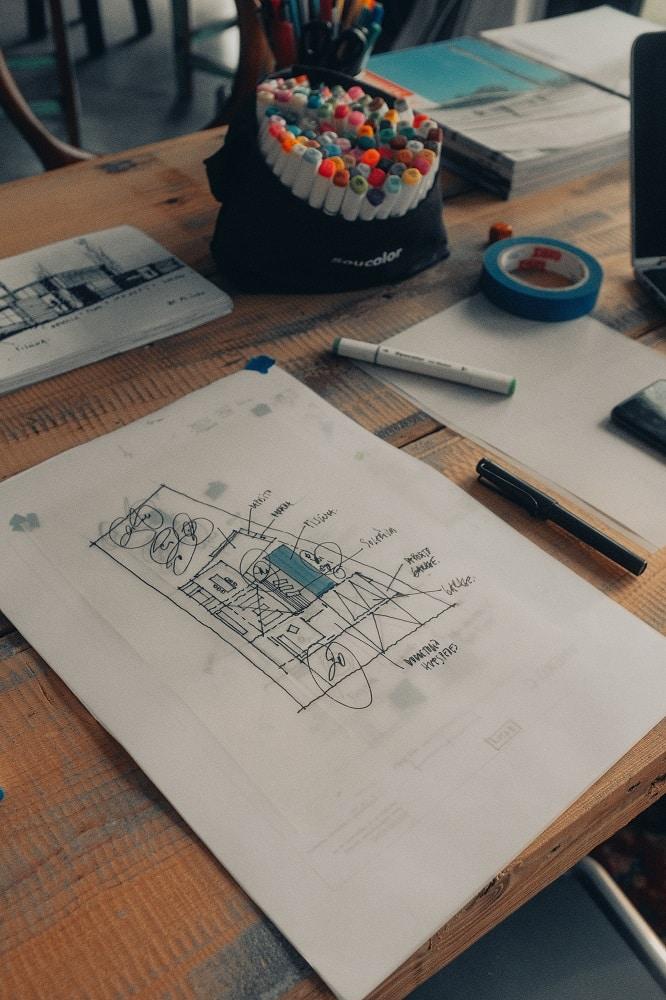
3. Rules And Regulations
Every area has its guidelines and regulations established by the local or regional authorities for construction purposes. Architects, designers, developers, contractors, etc., have to keep in mind and adhere to these regulations to avoid any legal disputes.
The design and construction process helps ensure that proper safety and health safeguards are in place. It further helps address concerns with the quality and remove any doubts that clients may have. Additionally, it allows architects to understand the scope within which they have to function while exploring the possibilities available.
4. Master Planning And Drawings
This stage involves developing the master plan as well as the various drawings and diagrams for the project. The report includes details regarding land use planning which indicates how the land will be utilized.
The plan should aptly demonstrate the building structure, its layout, number of floors, and other amenities. It also shows various design elements of the system, and different 2D and 3D drawings help showcase the potential of the entire project.
5. Financial Analysis
Several parameters are considered while evaluating the financials of the project. These can include the area, estimates of the required raw materials, operational costs, labor charges, depreciation, different types of taxes, etc.
Financial analysis is critical in providing the estimated cost of undertaking the entire project and generating the feasibility report.
6. Preparing The Feasibility Report
The Feasibility Report includes all the data gathered from various sources regarding the specific site and the surrounding area. The structural site analysis forms the basis of the feasibility report and shows whether the project is financially and practically viable or not.
It is only the feasibility report that decides whether to move forward with the project or not. Features such as cost analysis, technicalities of the project, compliance with local regulations, etc., are all considered while preparing this report.
7. Project Recommendations
If the project is given the green light after reviewing the feasibility report, the next step is to determine various schedules for completing different project components. This step includes establishing timelines and estimates for various activities.
The architectural site analysis forms the basis of various forecasts and projections for the project. It includes recommendations that promote efficiency and help complete the project in the best possible manner. The team has to come up with a proper schedule for the project as well as its sub-components.
8. Applications And Approval
After finalizing all the aspects of the project, the architectural firms and developers have to apply to the respective authorities for the necessary approvals. Getting these approvals may require in-person appointments as well as creating drawings and diagrams for the application.
The project can begin in earnest once the required approvals are received.
Critical Elements In A Site Analysis
There is no specific list that points out what factors should be covered in architectural site analysis. However, a few common elements are generally taken into consideration and are helpful for the purpose.
These elements generally include the geographical, historical, legal, social, climatic, and infrastructural aspects of the given site. The site analysis should be presented in such a manner to provide a visual representation of the project site through photographs, sketches, site mapping, and any necessary diagrams.
Site diagrams can best illustrate the beginning of the design process. They help lay out the possibilities and the limitations and highlight the factors that influence the decision-making process.
Multiple Approaches
You can choose from several different approaches for undertaking a site analysis. The choice of the process depends upon several factors, such as the size of the project, the design team, the relative proximity of the site, and many others.
One of the best approaches to adopt involves the collaboration of all the concerned parties. This method provides creative input from contractors, clients, designers, etc. Multiple perspectives also help in identifying key areas that require more attention as well.
It is also common to outsource more technical research activities, as these take a lot of time and effort. Architectural site analysis also incorporates several different types of data, which may be beyond the scope of the project design. In such cases, specialist firms can provide results much more efficiently due to skilled and experienced employees.
To acquire additional information and make informed decisions regarding elements, it is a good idea to consult local land surveying authorities and engineers, civil and geotechnical. They can provide detailed information regarding the soil, hydrology, surrounding topography, zoning, etc.

Things To Look Out For
Some critical areas need to be investigated appropriately for gathering the relevant data for site analysis. Some of the areas are detailed below:
1. General
These are elements that are the first that you should look for on the project site. General features include the geographic location, such as the site location, entrances, exits, the site boundary, addresses, roads, landmarks, existing structures, site security, etc. These are elements that help inform the context regarding the project.
2. Context Of The Neighborhood
The neighborhood context involves identifying the building use of existing and proposed structures in the area. It includes estimating the condition of the existing buildings, exterior spaces and their use, traffic activities and stops, vehicle movement patterns, etc. It is possible to obtain information regarding the neighborhood context from the municipal department of the area.
Identifying issues under this head requires direct observation and cover factors like street lighting, condition of existing buildings, architectural patterns, immediate surroundings, etc. The perception of the local inhabitants is also an essential factor for consideration.
It would be best to study factors such as buildings of historical or any particular significance, the path of the sun and shade, noise levels, legal regulations and restrictions, building context, materials, surfaces, heights, vernacular, and others.
3. Site And Zoning
These factors include the boundary and dimensions of the project site, paths through the site and the site dimensions, the area for construction, height restrictions for structures, transportation access, etc.
To identify the boundaries of the project site, you can obtain the information from the tax assessor’s office. Elements to consider include setbacks, zoning classifications, parking requirements, etc.
4. Natural Features
Natural features include the site’s physical characteristics, such as mountains, valleys, ridges, plateaus, slopes, etc. Vegetation is also a part of this and includes shrubs, trees, landscapes, greenery, and open spaces. Additionally, such features also include site levels that can affect the design process, potential problems with drainage, types of soil on the site, and more.
5. Man-Made Features
Artificial features include identifying the previous use of the site, concerns regarding contamination, previously existing structures and their state of repair, etc. You also need to consider whether previously existing structures are part of the project or not, retaining walls or other structures built on the site, etc.
6. Legal Restrictions
Before starting the project, you also need to consider any legal restrictions that may be in place on or near the project site. These may include conservation areas, easements and covenants, Sites of Special Scientific Interest (SSSI), listings, and others.
Other types of legal information include details regarding the ownership of the property. In this instance, the deed will provide the required information such as government jurisdiction, present ownership, description of the property, etc.
7. Access and Circulation
Access includes all the paths and means for reaching the site, including public and private routes and vehicular and pedestrian access. Similarly, circulation means how do visitors navigate around or through the area. It also requires consideration of accessibility of how disabled-friendly the site is.
Public transport amenities, peak transport hours, travel time required to walk to the site, etc., are also significant factors for consideration.
8. Utilities
Utilities include all the available amenities on the site, such as electricity, water, gas, communication, etc. It also provides for the location of power poles, drainage systems, and sub-stations.
9. Cultural and Human
This factor is essential to consider since it includes neighborhood problems like crime and vandalism, public perception towards the project’s general attitude regarding the locality, etc.
Additionally, it includes sociological, cultural, psychological, and behavioral aspects and the demography, ethnic patterns, recreational activities, etc.
10. Climate
Climatic factors include the site’s orientation, the impact of the weather on the site, variation of the temperature, rainfall, etc. The path of the sun at different times of the year and the wind patterns are also critical.
Several of these factors can easily be identified through a topographical survey or professional report.
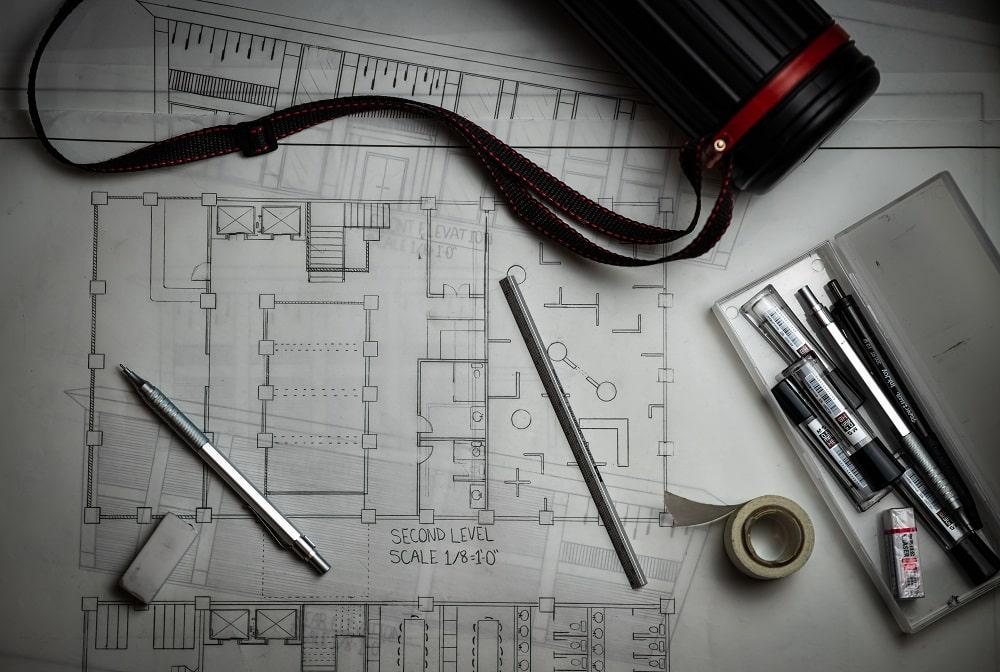
Evaluating The Site Visit
The evaluation process begins once you have visited the site and collected all the relevant data. It helps in drawing conclusions and understanding the implications of the process. Additionally, besides the various external factors that need to be considered, you also need to view the details of the client’s brief.
Is is vital to consider all the factors from an objective point of view for the purpose of evaluation. However, being objective does not mean that the importance of certain factors over others should not be considered. The design process will only depend upon a limited set of elements, which require a greater amount of focus.
A good design process involves bringing all these pieces of information together to make a coherent picture. Only when all the data is properly analyzed and examined, can it be assembled for proceeding to the next phase. Understanding various relationships between different factors will simplify and accelerate the entire process.
Ensuring A Thorough Analysis
It is best to collect as much relevant data regarding the site and comprehensively conduct proper research for project design purposes. This phase is crucial because if the site analysis is not executed correctly, the designer will be unable to develop ideal solutions, resulting in a sub-standard design.
Presenting The Site Analysis Report
In some instances, the architect or designer is required to present the site analysis report to the respective stakeholders. Here are some key points that will help in ensuring an excellent presentation:
-
- You should provide an overview of the project site and the collected data
- Key photographs (including aerial ones) will also improve communication while also making a positive impression
- Elements that can play a more vital role in the design process should be given more importance
- Adding images in the report is also beneficial for the presentation
- You can use site sketches, photographs, as well as annotated photographs highlighting essential points
- Please include all relevant data points while ensuring that they are concise and clear
- Avoid including complicated tables, schedules, and graphs from external sources
- Create your tables and charts that are simple and only provide relevant information
- Annotated drawings are beneficial for outlining features such as the path of the sun and angles
- Sketchup is an excellent tool for presenting sun paths in a meaningful manner
- At times it helps to provide some overlay drawings and diagrams to show your initial ideas
- Clarity is the most crucial factor to keep in mind while creating site analysis diagrams
Proper Use Of Site Analysis
An architectural site analysis is essential for any construction project and can make your job much simpler and more accessible if appropriately used.
Site analysis should help in identifying the local weather patterns of the area. This factor, in turn, can help design the structure in such a manner to maximize gains from sunlight and provide adequate shelter from wind, rain, and snow. Proper positioning of openings and entrances is ideal to ensure natural light and warmth for achieving good results,
For cooling during the hot months, the orientation of the structure should ensure proper circulation of air. The design should ensure that the long axis of the building is in alignment with the prevailing wind direction. The form should also provide enough shade through deep overhangs.
Additional Factors To Consider
The constructed volumes should be able to provide shelter during winter months and create private spaces via courtyards.
Making use of the local vernacular of surrounding buildings can be very helpful for utilizing the context. For instance, corten steel and dry stonewalls can serve as a contemporary interpretation of agricultural structures. Similarly, rammed earth walls can extend the site and can even be sourced from the land.
Weathered wooden features can portray the transformation and change of the project along with the site. Structures with large apertures are ideal for any site that offers prominent views. It is also possible to select and utilize the best features and opinions for drawing attention.
Depending upon the use of spaces, you can also create different views and experiences through other rooms at different times of the day. The vital thing to remember is that these ideas vary from site to site and can only be adequately utilized through proper examination and analysis of the site.
Site Analysis And Project Delivery
An architectural site analysis helps collect the required data that is the foundation for guiding the project forward. It is the logical entry point for undertaking and delivering the completed project to the respective stakeholders.
For that purpose, the site analysis diagrams require consistent visual language with the design delivery proposal. This consistency helps the site analysis become the backdrop for the design proposal. Delivery methods and strategies also vary on a case-by-case basis.
In certain situations, it is even possible to provide the client with the proposal in an informational packet. The client can go through the details and make the required adjustments. It is the responsibility of the architect or designer to integrate the required changes into the project design.
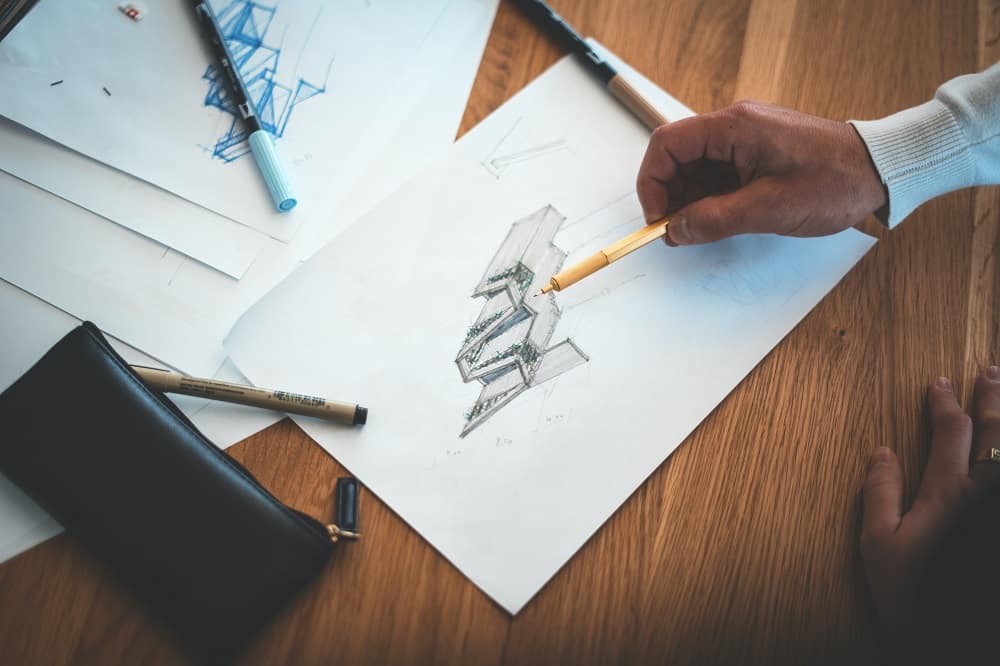
Utilizing Site Analysis Diagrams
Creating an architectural site analysis diagram involves mapping out information comprehensively for easier understanding and decision making. There are several different approaches to developing such diagrams, which can be subjective, objective, or narrative.
Site analysis diagrams can help you straightforwardly present the facts or outline a narrative about the site. Different techniques can shed light on various aspects of your findings and help identify and establish meaningful relationships between them.
It is beneficial to utilize a method that is ideal for highlighting the features of the project site while also guiding the design process.
The site analysis process continues throughout the project as new factors and questions arise. Transforming the collected data into visual information helps provide new insights and perspectives that are not possible otherwise.
Selecting The Right Technique
Being with your base diagram or drawing and superimpose your collected data on top of it. It will help you identify and understand the relationships of various elements and how they affect each other. The technique of superimposing multiple data sets over the base drawing is one of the ways to highlight that all aspects of the site interact with each other.
Select which type of diagram to use for your analysis purposes, as there is no single method suitable for all kinds of projects.
Another thing to bear in mind is that as necessary it is to include all relevant information in the diagram, it is equally vital to know what data to leave out. The inclusion of unnecessary elements will muddle up the diagram making it hard to understand.
There is no set standard for creating diagrams, and different methods are suitable for various projects. Site analysis diagrams may be more schematic or more experiential, depending on the case.
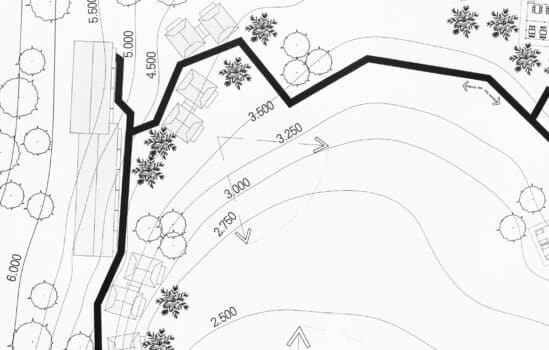
Conclusion
Architects and designers should remember that it is ideal to use all project elements to communicate the structure’s idea. Understanding the context and familiarizing yourself with it will help prepare for the start of the design phase.
Studying the historical background and the material conditions of the site will help ground the project in reality. The process of architectural site analysis also plays a supporting role in the schematic design or programming phase. A properly conducted research helps reflect the community’s needs where the project is to be undertaken.
The success of any architectural project can be accurately judged by the effectiveness by which it meets the requirements of those who are primarily affected by it.
Related Articles
14 Best Architecture Cut Out People Websites to Check
19 Best Urbanism, Design, Architecture Podcasts to Follow
22 Best Apps For Architects to Consider
Best CAD Program For Architects | All You Need To Know
Most Popular Architect Fonts | Creating Marvelous Architecture Portfolio
10 of the Best 3D Printers for Architects
Architecture Career Success Tips | Millennial Edition
Architecture And The Culture Of Long Hours
Are Architecture Internships the Most Important Jobs Of Your Career?
Architecture Interview Attire Dissected | What to Wear to an Architecture Job Interview
How To Create A Target List Of Architecture Firms
Learn How To Ace Your Architecture Phone Interview
The Architect and His Career in the Social Media Era
Things to Consider Before Accepting Your [Architecture] Dream Job
What Questions To Ask In Your Architecture Job Interview?
What You Need To Know About Architectural Writing
Architecture or Architerror | 13 Challenges Every Architect Faces Today
How to Create a Solid Research Foundation for Your Architecture Essay


